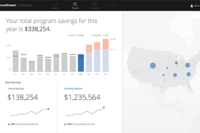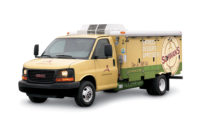Market forces have made it more challenging than ever to deliver refrigerated and frozen food products just in time, every time. Yet, it’s clear that only those companies that can do this while feeding their bottom line will survive and thrive in an exceptionally competitive environment.
Being strategically proactive is essential to succeeding amidst the industry’s current pressing issues, such as ever-increasing stock keeping units (SKUs), continuing driver shortages, sustainability concerns and pending legislation. The good news is there are strategies you can employ to turn challenges into successes.
These strategies need to be implemented to preserve quality and uphold speed to market. Products in transit must be kept at optimum temperature to avoid any threat to quality. Not doing so leaves manufacturers and distributors vulnerable to regulatory sanctions and loss of important products. Business that directly impacts your bottom line could also be threatened unless these products are moved quickly to market.
Here’s a checklist of actions to help secure business now and achieve the greatest levels of quality, speed and profit in your supply chain and delivery processes:
Have the right delivery vehicles and backup strategy. Because you have less time than ever in the order-to-delivery process, it is key that your delivery equipment is constantly at the right temperature for the various types of products you are delivering. They also must be able to sustain these temperatures for as long as needed, keeping in mind the number of stops vehicles have to make on each route. You should also have backup delivery vehicles ready and available should breakdowns occur, so you don’t lose valuable time and products. These losses threaten both current and future revenue.
Know the regulatory requirements. We are doing business at a time when the regulation of food manufacturing and delivery is at its highest. Make sure you know the new requirements mandated by the Food Safety Modernization Act (FSMA) and are in compliance. Failing to do so will invite government inspections, which could result in an operational shutdown.
Cut waste out of your supply chain using LEAN processes. With roots in the Kaizen method of continuous improvement, implementing LEAN techniques into your supply chain will deliver long-term value and outstanding business performance, quarter after quarter. LEAN practices improve quality and productivity by taking cost and waste out of all facets of the operation. With LEAN, every step in every process must add value. If it doesn’t add value, strive to eliminate it. The incremental changes that you make by using these processes are designed to continually feed your bottom line, even when under pressure.
Employ automation. Automating your warehousing and distribution can help you cope with all of your supply chain challenges. Consider exploring the options to do this if you haven’t already. The right automation in the right application can bring both efficiency and reliability. Often, a skilled third-party logistics provider (3PL) can offer a customized distribution management solution that streamlines everything in the warehouse, from product flow to labor management, inventory management, packaging and regulatory and quality compliance.
Achieve transparency with technology. Harness and understand how to use the power of the right technology to provide the real-time transparency needed to keep products moving easily through the supply chain. With the right technology and a deep knowledge of how it can work to your advantage, you can make critical adjustments the minute they are required—and sometimes even before.
Consider outsourcing non-core business functions. When you add up the time and money it takes to deal with issues that that aren’t core to your company’s expertise, like transportation and regulation compliance, you may find that it makes sense to outsource those functions, especially if you are trying to grow your business. Outsourcing to an experienced 3PL with a national and international reputation for quality allows you to focus on what you do best rather than on an array of ancillary activities.
Although the strategies that help you ensure both quality and speed to market for your food products may seem comprehensive, they involve actions that are vital to take. They directly impact your ability to compete and succeed. Employ them to get to market better and faster, and you will soon see how the benefits boost your bottom line.



